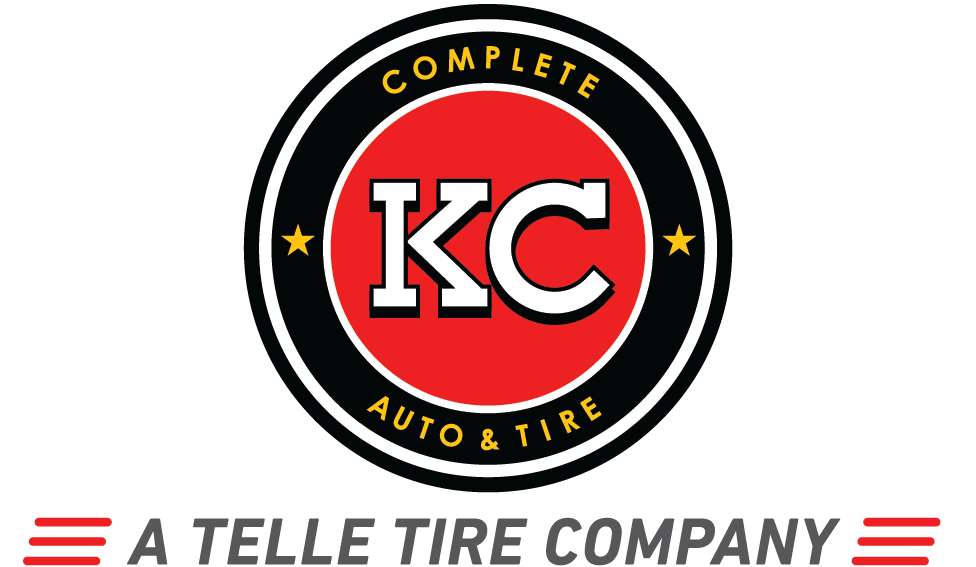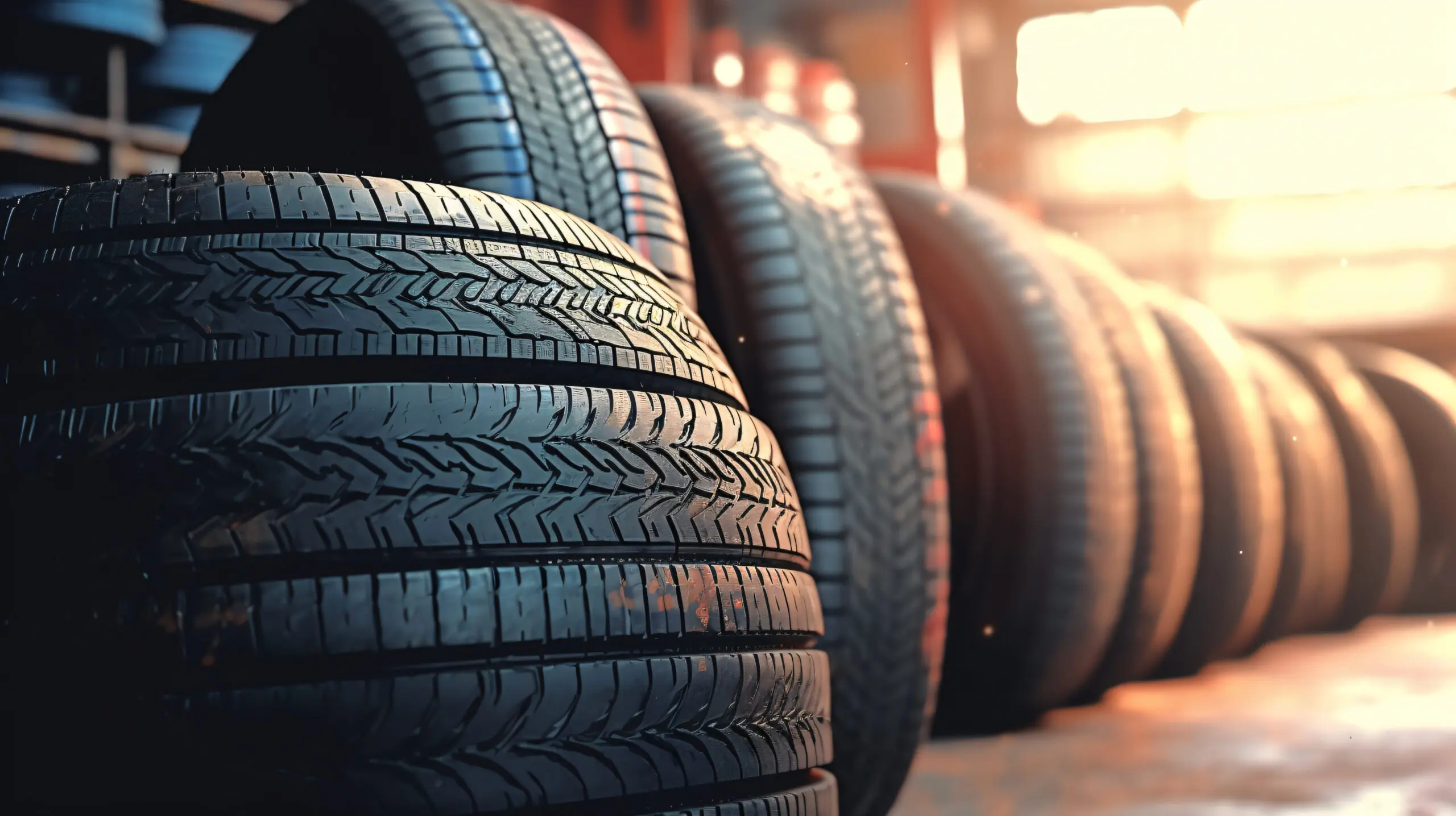Anatomy of a Tire
Tires are the unsung heroes of every vehicle, playing a vital role in performance and safety. While they might seem like simple rubber circles, much more is going on beneath the surface. Every tire is a complex assembly of various components, each with a specific purpose contributing to its functionality. As you venture into the world of tires, it’s crucial to understand the parts of a tire to make informed decisions. In this guide, we’ll break down the critical components of tires and help you identify quality options.
The Key Components of Tires and How They Impact Quality
Tires are the result of intricate engineering, consisting of several crucial components that work in harmony. Below are the essential components that make up every tire.
Tire Tread
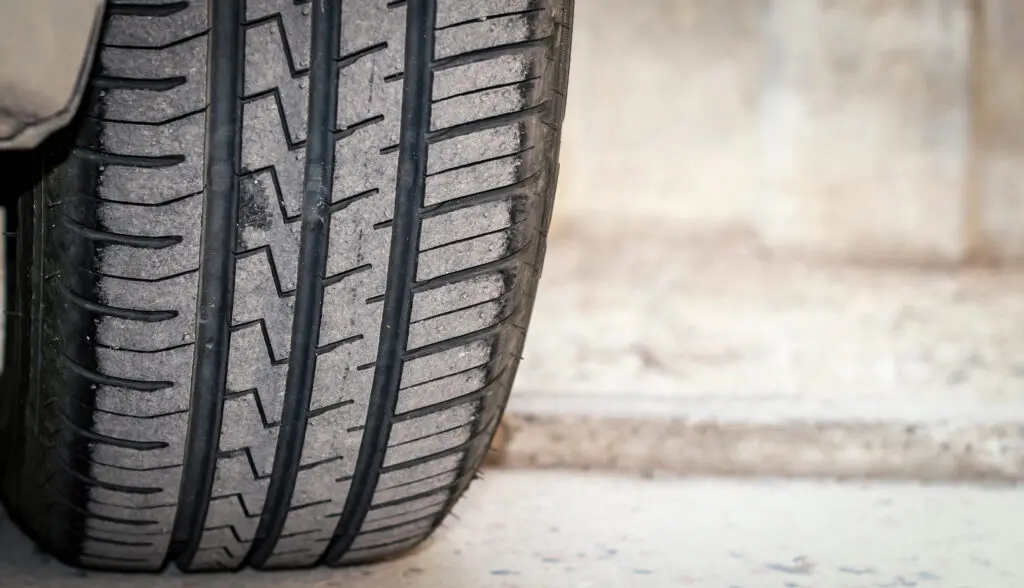 The tire tread is the part of the wheel that meets the road. Its purpose is to provide traction, grip, and stability, making it a critical element for safe driving. Different tread depths and patterns cater to various road conditions, ensuring optimal performance on wet, dry, or snowy surfaces. Learn more about tire tread.
The tire tread is the part of the wheel that meets the road. Its purpose is to provide traction, grip, and stability, making it a critical element for safe driving. Different tread depths and patterns cater to various road conditions, ensuring optimal performance on wet, dry, or snowy surfaces. Learn more about tire tread.
The Impact of Tire Tread
Proper tire tread depth is crucial for maximizing safety, performance, and overall driving satisfaction. A well-maintained and adequately treaded tire provides superior grip on the road, enhancing safety and handling, especially in adverse weather conditions. Additionally, a healthy, deep tread can extend the tire’s life by dispersing heat and wear evenly, ensuring a longer-lasting investment. Tire tread also significantly contributes to ride comfort, reducing road noise and providing a smoother driving experience.
Sidewall
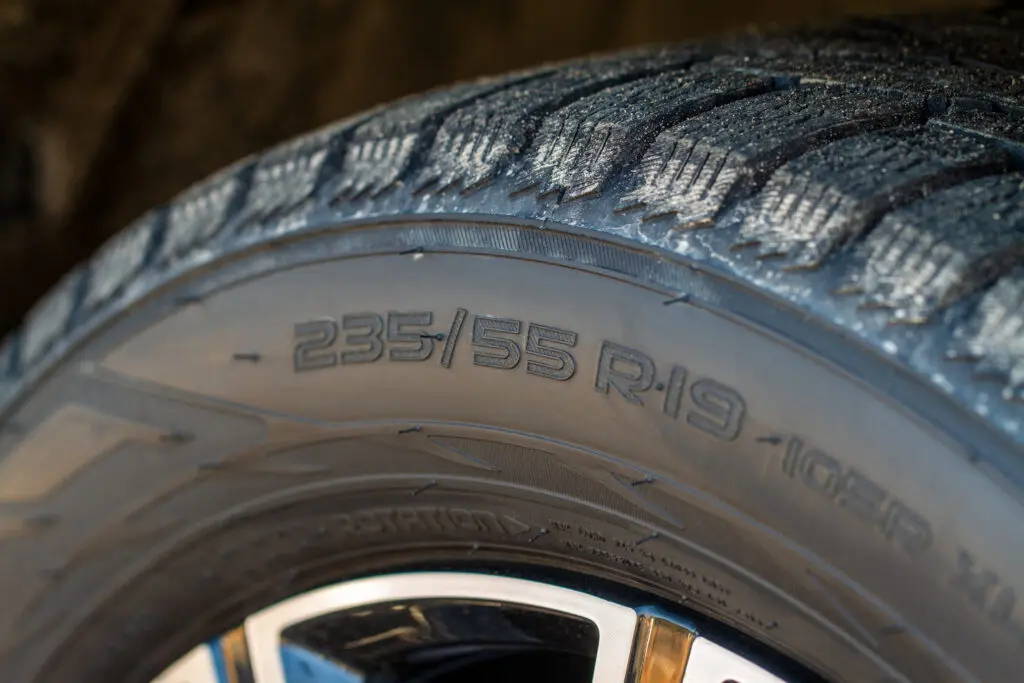 The sidewall is the vertical section of the tire that connects the tread to the wheel. Not only does it provide structural integrity, but it also carries essential information like tire size, load capacity, and speed rating. While it is possible to purchase tires with sidewalls in different colors, most tire sidewalls are solid black.
The sidewall is the vertical section of the tire that connects the tread to the wheel. Not only does it provide structural integrity, but it also carries essential information like tire size, load capacity, and speed rating. While it is possible to purchase tires with sidewalls in different colors, most tire sidewalls are solid black.
The Impact of Tire Sidewalls
The construction and quality of sidewalls impact a tire’s ability to withstand external forces and maintain structural integrity. High-quality sidewalls contribute to a longer lifespan and increased durability by resisting damage from road hazards, such as potholes and curbs.
Sidewalls also directly influence driving performance as stiffer sidewalls enhance cornering stability and responsiveness, which is crucial for high-performance vehicles. On the other hand, softer sidewalls can provide a smoother ride, improving comfort but potentially compromising performance in certain driving conditions. When properly designed, a tire’s sidewalls can absorb shock and vibration and mitigate road noise for a more comfortable ride.
Belt Plies
Belt plies are layers of fabric or steel cords that reinforce the tread area, providing strength and stability. These plies control the tire’s shape and prevent excessive flexing, enhancing handling and performance.
The Impact of Belt Plies
Belt plies enhance the tire’s resistance to punctures, cuts, and impacts from road debris, contributing to its longevity and durability. They are also responsible for helping distribute heat evenly across the tire to further reduce wear and extend overall lifespan.
In terms of driving performance, belt plies are pivotal in maintaining the tire’s shape and stability, especially during high-speed manuevers or when hauling heavy loads. They also work to improve handling and steering response for a safer, more controlled driving experience.
The belt plies can also affect ride comfort by providing additional support to the sidewalls, reducing road noise and vibrations for a smoother, quieter ride.
Inner Liner
The inner liner is a crucial barrier that maintains tire air pressure and prevents leakage. This component is vital in preserving the tire’s integrity and performance. When a tire’s inner liner fails, it can lead to a range of common issues that can compromise safety and performance. One of the most significant problems is air leakage, as the inner liner is responsible for maintaining proper tire pressure. A failure in this component can result in underinflated tires, leading to reduced fuel efficiency, decreased handling capabilities, and an increased risk of blowouts. These issues are not typically visible from the outside, underscoring the importance of regular tire maintenance and inspections to ensure the inner liner’s integrity.
The Impact of the Inner Liner
The tire’s inner liner, often an overlooked component, plays a pivotal role in shaping a tire’s lifespan, durability, driving experience, performance, and comfort. As a crucial barrier to maintaining tire air pressure and preventing leakage, the inner liner directly influences tire longevity and durability. A well-maintained inner liner ensures that the tire remains properly pressurized, reducing the risk of underinflation-related wear and potential blowouts, thus extending its overall lifespan.
In driving performance, the inner liner maintains consistent tire shape and pressure, enhancing handling, stability, and steering response. Moreover, it plays a role in ride comfort by reducing road noise and vibrations. Despite being hidden from view, the inner liner’s integrity is paramount, emphasizing the necessity of regular tire maintenance to ensure optimal performance, safety, and comfort on the road.
Bead and Bead Filler
The bead is a ring of steel wires wrapped in rubber that secures the tire to the wheel rim. Bead filler compounds help maintain a proper seal, ensuring optimal air pressure. The bead and filler also impact the tire’s ride and handling characteristics.
What is Bead and Bead Filler?
Although you can’t see them, the tire bead and bead filler are indispensable components that profoundly impact a tire’s lifespan, durability, driving dynamics, performance, and ride comfort. These elements are responsible for securing the tire to the wheel rim, forming a critical seal that keeps the tire inflated.
The Impact of the Bead and Bead Filler
A properly functioning bead and bead filler are essential for maintaining consistent air pressure, which is crucial for tire longevity and durability. Their role in ensuring a secure connection between tire and rim directly affects driving performance by providing stability during cornering and high-speed maneuvers. They also contribute to ride comfort by helping to absorb road shocks and vibrations.
Identifying Quality Tires
When choosing quality tires, understanding the materials used and their impact on durability and performance is key. High-quality tires are made with specialized rubber compounds, multiple layers of reinforcement materials, and advanced construction techniques. These factors collectively contribute to a tire’s longevity, grip, and overall performance. If you’re wondering, “What are quality tires made of?”, look for these features when shopping.
Performance vs. Standard Tires and Their Differences
Performance tires offer a step up from standard options, with advantages that can significantly enhance your driving experience such as unique tread patterns, construction, and rubber compounds. Improved handling, cornering, and responsiveness are some benefits these tires bring to the table. Moreover, different types of tires, such as snow tires and ultra-high-performance (UHP) tires, cater to specific driving conditions and styles. Choosing the correct type of tire can make a noticeable difference in your vehicle’s performance and safety.
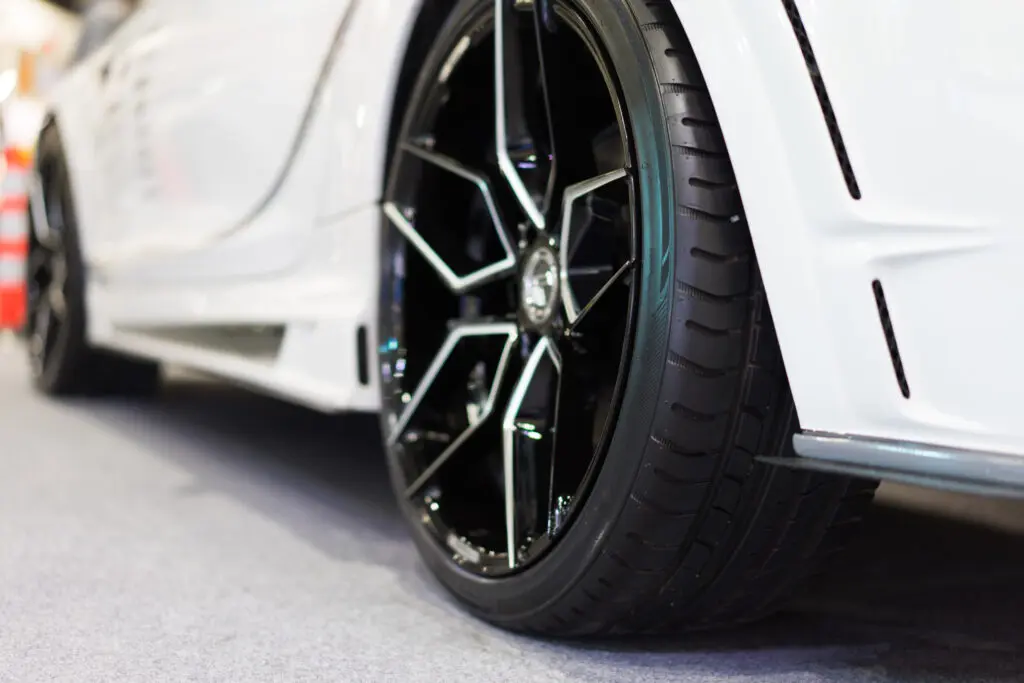 .
. 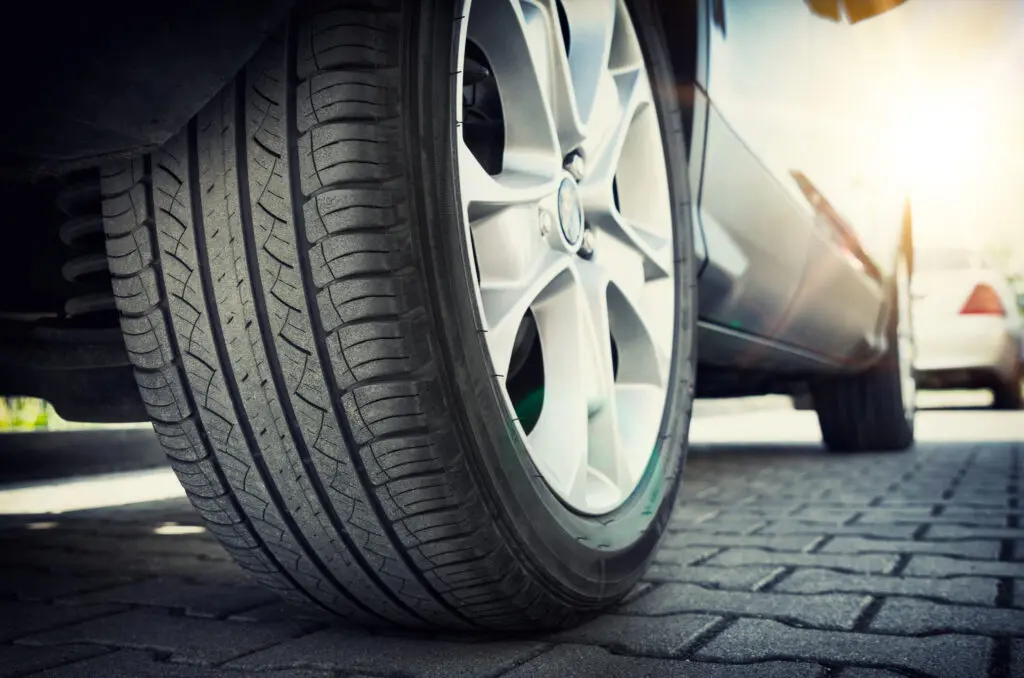
Other Tire Quality Considerations and Distinguishing per Model
As you delve deeper into the world of tires, there are a few more aspects to consider:
Exploring Tire Tread Patterns
Tire tread patterns are more than just aesthetics; they significantly impact grip and handling. Different patterns, such as symmetrical, asymmetrical, and directional, are designed for specific purposes. Understanding these patterns can help you choose the right tire for your needs.
Decoding Sidewall Tire Numbers
Reading the numbers and letters on a tire’s sidewall might seem like a secret code, but they hold crucial information. These numbers indicate tire size, load index, speed rating, and more. Decoding them will assist you in making an informed decision when buying new tires.
The Role of a Tire Rim
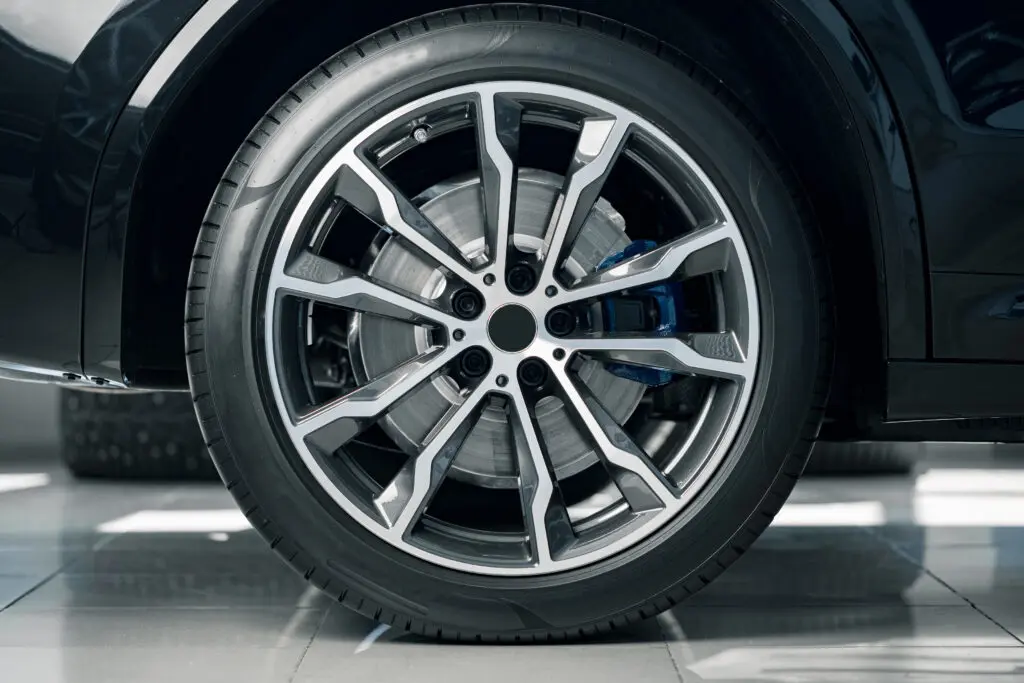 While not a part of the tire itself, the tire rim (wheel) is a crucial partner. Choosing the correct rim size and type ensures optimal tire performance. The rim’s structure and materials can impact how the tire behaves on the road.
While not a part of the tire itself, the tire rim (wheel) is a crucial partner. Choosing the correct rim size and type ensures optimal tire performance. The rim’s structure and materials can impact how the tire behaves on the road.
Quality and Comfort of Ride
It’s not necessary to buy the most expensive tires, but understanding and considering how the right ones can impact your driving experience should come right after safety. Tires affect various performance aspects including acceleration, braking, handling, and overall control. Having the right tires can enhance grip, traction, and responsiveness, providing your vehicle with improved acceleration, shorter braking distance, better cornering ability, and enhanced driving dynamics. The tires also affect ride comfort, noise level, and fuel efficiency.
Get the Best Tires for Your Vehicle at Telle Tire
Remember, tires are more than just rubber – they’re intricate systems engineered for your safety and driving pleasure. Invest the time in understanding their components, and you’ll be well-equipped to make informed decisions that enhance your vehicle’s performance and overall driving experience.
When it’s time for new tires or repairs, trust Telle Tire to provide top-notch service and quality products. Our team of experts understands the nuances of tire components and can guide you toward the best choices for your vehicle. With a commitment to performance and safety, we ensure you’ll drive away with confidence.
Contact us or visit your nearest Telle Tire location and experience the difference firsthand.
